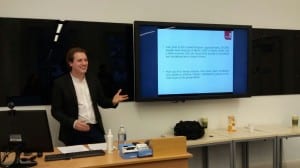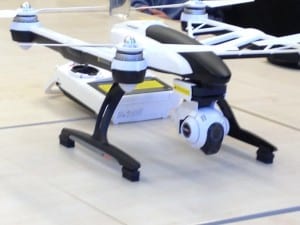March 6, 2014
This week’s seminar was a brief introduction to the use of tool mark comparisons in criminal investigations. It was given by Dave Baldwin who has experience working for the Forensic Science Service (FSS) and for Principal Forensic Services.
The seminar provided us with a brief background into the different types of tool mark impressions such as impressed marks (when a contact forces them together without movement) or dynamic marks (striations). These unique impressions allow an examiner to determine the action that caused the formation of such an imprint e.g. what type of instrument caused the forced entry to a door, the breaking open of a window, cut the fence or chain. Additionally, these marks can be left on the ribs or on the skull of a victim which allows the examiner to associate a suspect to a knife or weapon.
The complicated part is that it is important to understand the information surrounding the case as he needs to know what questions need to be answered in order to determine the right course of analysis. For example, are we trying to associate a suspect to a weapon or deduce whether that particular object caused the impression at the scene? Are we trying to determine the type of instrument that would have caused this impression like a screwdriver, and is it possible to determine that a specific object at a scene caused the impression?
The examiner will look at a variety of features to answer these questions such as:
– Class features: measurable features of a specimen which indicate a restricted group source
– Sub-class features: discernible surface features of an object which are more restrictive than class characteristics
– Individual characteristics: marks produced by the random imperfections or irregularities of tool surfaces. These random imperfections or irregularities are produced incidental to manufacture and/or caused by use, corrosion, or damage. They are unique to that tool and distinguish it from all other tools.
– Manufacturing processes: involves the transfer of rapidly changing or random marks on to work pieces caused by tool wear and chip formation or by electrical/chemical erosion. Microscopic marks on tools may then continue to change from further wear or abuse. These irregularities are considered unique and capable of being used to individualize or distinguish one tool from another.
– Finishing processes: sanding of lands resulting in unique land impressions to make it look attractive.
To analyse these features, examiners use a variety of instruments such as bench and comparison microscopes, casting techniques and a new instrument that is occasionally used is a comparison SEM (scanning electron microscope). This allows them to compare and contrast their analysis, but since these are compared they are at risk to a degree of subjectivity. Therefore, it is important to remain as objective as possible by following a rigid scientific methodology as bias is becoming an increasing issue within forensics analysis.
Finally, this introduction gave a small insight to the duty of a forensic tool mark examiner and the critical eye one needs to have to perform such work. Further, it showed the ease with which bias can cause the occurrence of inaccuracies in the analysis stage showing that great care needs to be taken when dealing with any type of evidence.
 Close
Close





